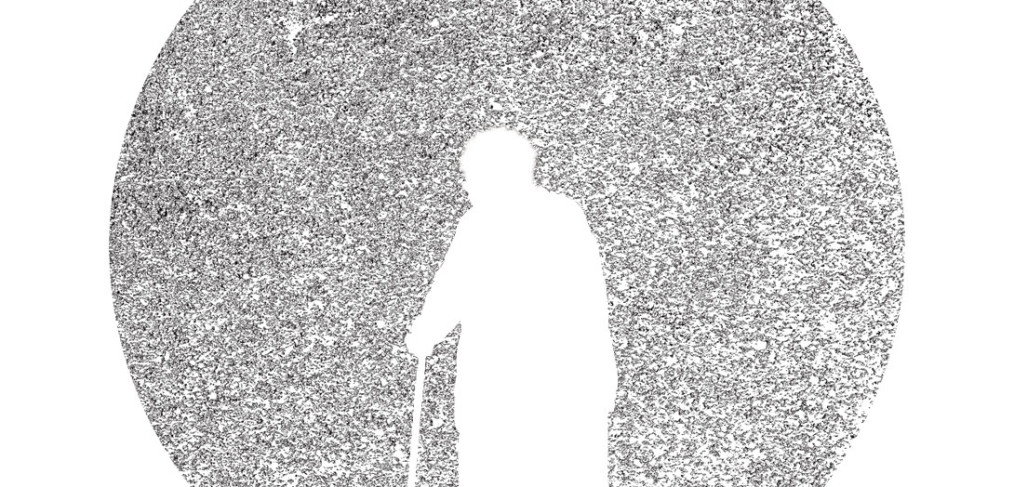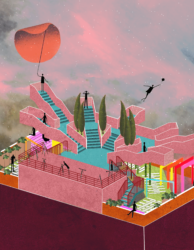
Architecture and dementia
Author: Anežka Prokopová
Due to our aging population, numbers of people with dementia are constantly increasing, while both the cause and the cure are still unknown. At the end of a lifetime, after all a person has been through, it is hard to let go. It is hard to let go of home, of memories, of oneself. Due to the disease, cognitive functions are lowered or lost and many things become insecure. One’s life falls apart in pieces and is gradually stripped to pure, basic sensations and emotions. Without any reasoning ability, people with dementia gradually become lost in space and time. They are no longer able to adapt the surrounding environment to their needs and become therefore extremely dependent on what others arrange for them.[1] With only basic abilities remaining, learned motoric, instincts and occasional awakenings, it becomes hard to perform everyday tasks as well as to find a way through a building.
Thanks to architecture and dementia being my graduation topic, I realized that learning from dementia is a great chance to reflect on what really matters in space and what are the simple, essential things people truly enjoy. It leads to thoughts about how space can help us enhance the very basic enjoyments of our true self even when we no longer remember which those are.

Lost in Space and Time © own illustration
Within our hyper-cognitive society, which values and requires fast adaptation and constant learning, being diagnosed any kind of dementia means bearing a stigma of uselessness and disability, nevertheless one’s previous status. It means being excluded from the society’s center not only economically and socially, but also literally by means of being moved from home into a special care unit. With no way back and no other place to go, many people spend last years of their lives in such situation, dependent on help of others. Involuntarily bounded to the space provided, they experience less and less changes of environments as they no longer have the need or the right to do so. With dementia progressing, life outside of the caring home becomes more demanding and their life sphere gradually shrinks. At a certain point, it shrinks in between walls of the care unit and continues till the point where it becomes the person himself and his immediate bodily surroundings[2]. In the late stage of dementia, one single room becomes the whole world.
In this sense, designs of such places are clearly an extremely sensitive matter to work with. Their importance is immense, yet tremendously fragile to grasp because they have to work with what is left deep inside our minds and bodies when the disease progresses. Because of that, it requires lot of attention and apprehension to deal with them correctly. It requires understanding of dementia and its consequences as well as apprehension of demented peoples’ perspectives. The latter is especially crucial because people with dementia are very often excluded from the design process, although they know best what is most suitable for them.

Dementia and space © own illustration
This process of learning and improving can not only help people with dementia feel more comfortable, but it can also help architects broaden their sense of space, its boundaries, and qualities. It can help enlarge their notion of environment when seen through the eyes of the challenged. People with dementia are not the only disabled community and there are many ways of perceiving space and architecture. Approximately 15% of the world’s population live with some disability and therefore with a different perspective and perception of our shared environment. Disabled people form the largest minority in the world and offer a great opportunity to understand and accept different forms of receptions not only to architects. In countries with life expectancy over 70 years, people spend about 8 years of their lives disabled in a certain way. [3]
It is therefore worth understanding and accepting various notions of space where disabilities, including dementia, offer a guiding hand. It is becoming even more urgent as numbers of people affected are unfortunately constantly increasing, showing no decline. At the same time, designing for dementia is a great chance to take a step back and reflect on the society as a whole. It is an opportunity to shift our focus back towards the basic, sensory experience of architecture which is to provide shelter and enrich our lives.[4] Environments which are safe, aesthetically pleasing through materials, lights, sounds or scale and proportions are beneficial to all of us, no matter the diagnosis.
[1] Dementia, Design and Technology : Time to Get Involved, ed. Britt Östlund Päivi Topo, vol. 24, Assistive Technology Research Series (2009).
[2] G. Marquardt and P. Schmieg, “Dementia-Friendly Architecture: Environments That Facilitate Wayfinding in Nursing Homes,” Am J Alzheimers Dis Other Demen 24, no. 4 (2009).
[3] United Nations Enable, “Factsheet on Persons with Disabilities,” in Development and human rights for all, ed. Secretariat for the Convention on the Rights of Persons with Disabilities (United Nations Secretariat).
[4] Eckhard Feddersen, Lost in Space: Architecture and Dementia, ed. Insa Lüdtke (German National Library: Birkhauser Verlag, 2014).





